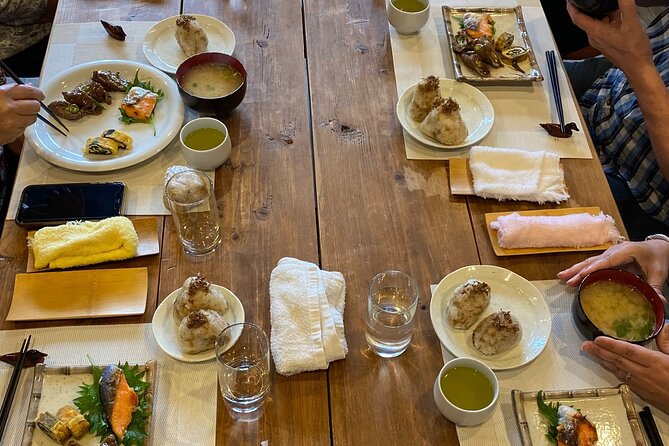Set out on a journey through the intricate world of ‘Tatami,’ a quintessential element of Japanese culture often overlooked by casual observers.
As visitors step into the realm of tatami, they are met with a blend of tradition and craftsmanship that has withstood the test of time.
The allure of this experience lies in unraveling the secrets behind the meticulous production process and the profound cultural significance woven into each tatami mat.
This immersive tour not only unveils the artistry involved but also offers a rare glimpse into the heart of Japanese heritage, enticing travelers to explore the depths of this unique cultural treasure.
Quick Takeaways
- Tatami embodies Japanese culture through centuries-old craftsmanship and symbolic significance.
- Tatami offers a blend of tradition and modern functionality, enhancing interior design with comfort and aesthetics.
- Handmade tatami production reflects respect for tradition, craftsmanship, and sustainable, eco-friendly practices.
- Experience a unique journey through the art of tatami making, connecting with Japanese heritage and artistry.
History of Tatami in Japan
The history of tatami in Japan dates back centuries, intertwining with the traditional lifestyle and cultural practices of the Japanese people. Tatami, a type of mat flooring, holds significant value in Japanese traditions.
Crafted with precision and care, tatami craftsmanship is a revered art form that has been passed down through generations. These mats were initially luxury items found in the homes of nobles and samurais, symbolizing status and elegance.
Over time, tatami became more accessible, spreading to homes across Japan and becoming a staple in traditional Japanese architecture. The intricate process of making tatami involves weaving soft rush straw and covering it with woven igusa (soft rush) or fabric, resulting in a durable yet comfortable flooring material that embodies the essence of Japanese culture.
Tatami Making Process
Craftsmen carefully weave soft rush straw to create the intricate and traditional tatami mats used in Japanese homes and buildings.
- The artisans meticulously measure and cut the rush straw to precise lengths.
- They then skillfully interlace the straw with a cotton or linen border to form the base of the tatami mat.
- Next, the craftsmen cover the base with a finely woven rush straw facing, ensuring a smooth and uniform surface.
- Finally, the tatami undergoes a pressing process to compact the layers firmly together, resulting in a durable and comfortable flooring option.
Tatami craftsmanship employs traditional techniques that have been refined over generations, while modern innovations in tatami materials have expanded its applications beyond traditional Japanese architecture.
Benefits of Tatami Flooring
Pioneering a blend of traditional craftsmanship with modern functionality, tatami flooring offers a unique combination of comfort and versatility in interior design. Along With its aesthetic appeal, tatami flooring provides several health benefits.
The natural materials used in tatami, such as rush grass and rice straw, contribute to better indoor air quality by absorbing moisture and preventing the growth of mold and mildew. This can help reduce allergies and respiratory issues. On top of that, tatami’s sustainability advantages make it an eco-friendly choice for flooring.
The materials used are biodegradable and renewable, aligning with environmentally conscious design practices. By choosing tatami flooring, you can enjoy not only a beautiful and comfortable living space but also contribute to a healthier environment.
Cultural Significance of Tatami
Exploring the cultural significance of tatami reveals a rich tapestry of tradition and symbolism woven into the fabric of Japanese heritage.
- Tatami Etiquette: Tatami rooms hold special etiquette rules, like not wearing shoes on them.
- Preservation: The meticulous care in maintaining tatami reflects respect for tradition and craftsmanship.
- Tatami Room Design: The layout of tatami rooms is meticulously planned, often incorporating elements of nature.
- Aesthetics: Tatami’s simple yet elegant appearance influences the overall aesthetics of Japanese interiors, promoting a sense of harmony and tranquility.
Experience Handmade Tatami Tour
Set out on a fascinating journey through the intricate and time-honored art of handmade tatami production. Witness firsthand the meticulous tatami craftsmanship passed down through generations, preserving traditional practices.
This immersive experience offers a unique opportunity to explore the world of handmade tatami, where each step showcases the dedication and precision required to create these cultural gems. Engage in the process of weaving and assembling the tatami mats, gaining a deeper understanding of the significance behind each carefully crafted piece.
Enjoy the essence of culture as you participate in this hands-on activity, connecting with the heritage and craftsmanship that define Japanese tatami production. This tour promises an enriching encounter with the artistry and tradition of handmade tatami.
Common questions
Is There a Specific Etiquette or Tradition Associated With Walking on Tatami Flooring?
When walking on tatami flooring, it is customary to remove shoes, as a sign of respect for the delicate material. This practice not only preserves the flooring but also reflects the cultural significance and traditions of tatami.
Are There Different Types of Tatami Mats Based on the Materials Used or Weaving Techniques?
There are various types of tatami mats based on weaving techniques and materials. Traditional tatami is hand-woven using natural materials like rush grass, while modern ones may incorporate eco-friendly materials like wood chips or foam for sustainability and durability.
Can Tatami Flooring Be Customized in Terms of Size, Design, or Color?
Yes, tatami flooring can be customized. Individuals can select custom sizes, traditional designs, and various color options. On top of that, they have the opportunity to personalize patterns, adding a unique touch to their tatami mats.
How Does the Maintenance and Care for Tatami Flooring Differ From Other Types of Flooring?
Regular cleaning with a soft brush and occasional vacuuming help maintain tatami flooring. To prevent stains, avoid spilling liquids and place protective mats under heavy furniture. Repair damages promptly by replacing damaged mats. Preservation methods include airing out mats and avoiding direct sunlight.
Are There Any Modern Adaptations or Innovations in Tatami Production to Suit Contemporary Living Spaces?
Modern innovations in tatami production focus on sustainability and contemporary design, offering space-saving solutions for today’s living spaces. These adaptations include lighter materials, modular designs, and hybrid constructions to blend tradition with modern lifestyles.
The Sum Up
Enjoy the world of tatami and gain a deeper appreciation for this traditional Japanese art form through a fascinating factory tour and hands-on experience.
Discover the history, craftsmanship, and cultural significance behind tatami flooring as you witness the meticulous production process firsthand.
Experience the beauty and benefits of tatami for yourself and take home a newfound understanding of this iconic Japanese tradition.
Don’t miss out on this unique opportunity to explore the rich cultural heritage of Japan through tatami!




